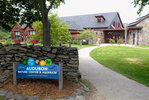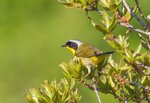Protecting Rehoboth’s Natural Resources
Rehoboth Ramblings
It’s finally spring and turtles will soon be on the move. Madeleine Linck, a local wildlife biologist and naturalist, gave a very interesting talk and slide show about our native turtles at the annual meeting of the Rehoboth Land Trust in March. Here are just some of the facts Madeleine shared about turtles:
Massachusetts has ten native freshwater species of turtle plus one exotic: the red-eared slider was originally bought back in the day as a dime-store pet and often released into the wild. One of the rarer varieties of special interest to us in Rehoboth is Blanding’s Turtle. This turtle has a long neck that is bright yellow. It grows up to six pounds and never bites. This species was named after Rehoboth’s own William Blanding (1773-1857), who was a doctor, local historian, and “at heart a naturalist”. These turtles like shallow marshes and are one of the threatened species in Massachusetts.
Madeleine said that turtles have changed little since the time of the dinosaurs. Yet though they were once very common, their numbers are declining, especially in the past 100 years since the coming of the automobile has greatly increased roadkill.
Turtles live a very long time and they don’t reproduce until they are 14 to 16. They can live many decades and females can still lay eggs at age 60 or older. They lay eggs in the ground in June. Turtle eggs are a favorite food of predators such as skunks and raccoons and there are more predators now than before.
Madeleine said that 90% of turtle nests are attacked by predators, so the odds are against a baby turtle reaching maturity. And for every adult female that is killed, there is a downward spiral in the population. Biologists consider the loss of a female turtle as equal to the loss of 500 eggs.
Many of us in Rehoboth are familiar with snapping turtles and box turtles. Snappers can easily grow up to 20 lbs. Madeleine said the largest one recorded in Massachusetts was a 40-pounder at Great Meadow. Painted turtles can be seen on logs starting in May, basking in the sun to absorb warmth.
Turtles are often on the move in spring and fall. Madeleine said that if you want to help a turtle trying to cross a country road this time of year, be sure to relocate the turtle in the direction it was headed. Otherwise, they’ll just go back to the road.
While box turtles can be picked up, the best way to move along a snapping turtle is by gently nudging it along from the rear with a sturdy plastic snow shovel. Never pick up a turtle by its tail. (I can vouch for the snow shovel method myself, though Madeleine said she has also had success using a tennis racket.)
How can we help our turtles? Here are some suggestions: landscape your property with native plants, maintain buffered areas for turtle nesting, and clean up wetlands (fishing line is lethal to turtles and other wildlife). Watch for turtles on the road in May and June. Leave all turtles in the wild where you found them. And support organizations that preserve wildlife habitat, such as the Rehoboth Land Trust.
Also speaking at the March meeting were RLT member Kylee Hitz, and Spencer Desrosiers. They, along with Haley Cwynar, designed the great new interactive website. The Rehoboth Land Trust works to preserve the rural character and natural resources of our town. Adam Latham is the president of this all-volunteer 501(c)(3) organization which was founded in 1989.
Since then, the land trust has worked to protect over 250 acres in Rehoboth. Many of the acquisitions and conservation restrictions (CRs) are a result of partnerships between landowners, the town, the commonwealth, and other land trusts or non-profits. A conservation restriction is a legal agreement between a landowner and another entity (RLT, the Town of Rehoboth, etc.) that permanently protects the property’s conservation value by imposing limitations on its uses.
The RLT continues landowner outreach and discussions on CRs, land donations, and land purchase, and welcomes new members to the organization. You can become a member or request more information through the new website. The Land Trust also maintains walking trails, such as the popular Ephraim Hunt Ministerial Land trail on Pond Street (there is a small parking lot there too).
The dedicated volunteers of the Rehoboth Land Trust are doing great things to protect and preserve the woods, wetlands, and rural aspects of Rehoboth. Many thanks go to local people who have donated land also. Do check out their new website to find out lots more about this worthwhile organization. Learn what new properties they have acquired, how you can access their walking trails, and how you can help the Land Trust in ways large and small: rehobothlandtrust.org.
















Comments
No comments on this item Please log in to comment by clicking here